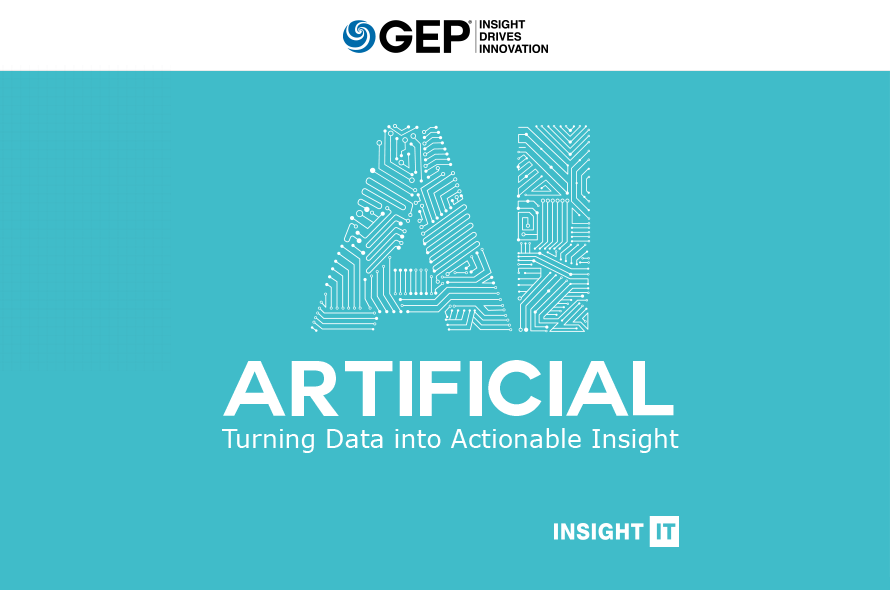In today’s digital economy, enterprises are generating data at a scale and pace never seen before. For this data to be useful for business users — and increasingly bots, devices, and machines — it must be processed, analyzed and then translated to actionable information.
Artificial intelligence (AI) can help transform vast amounts of data into actionable intelligence for decision-making — and even make those decisions, if required.
A new Insight IT piece ― Artificial Intelligence: Turning Data into Actionable Insight ― explains why CIOs and IT leaders must include AI at the core of their digital strategy. It also discusses how cloud-based solutions with native AI capabilities will become critical enablers for digital transformation.
A must-read for CIOs and IT professionals looking to boost enterprise-wide productivity and performance with AI.
Many of the automation opportunities that leading businesses discuss today ― advanced analytics, robotic process automation, augmented capabilities ― are fundamentally driven by Artificial Intelligence (AI). From an applied value standpoint, AI comprises two main technologies: machine learning and cognitive processing. Machine learning provides AI with large data sets that have been parsed and modeled, and cognitive processing is where the interpretation begins ― it is the first step toward a meaningful output.
Machine Learning
Machine learning is all about algorithms. And while they do not equal intelligence in the human sense, some of today’s algorithms are so sophisticated that their end products resemble intelligence. For instance, when we give a voice command to a device that swiftly carries out the desired task, the interaction seems highly intelligent. We can order more coffee beans, change the temperature in the living room, or start a favorite musical album ― all with a simple command.

These programs have been “trained” through many iterations of the same algorithms to execute the correct response to each command. Machine learning gives us the foundational capacity to create software that reacts to business needs and data. Machines become familiar with the normal patterns and behaviors of day-to-day use. As a result, these machines can anticipate our requirements while also calling out, and even predicting, when outlier events will occur.
Cognitive Processing
Cognitive processing takes data to the next step by turning information into meaningful intelligence in real time. Rather than being limited to an inquiry about how many suppliers are associated with a specific spend category, users can simply ask, “What is going on with my spend?” and expect a meaningful answer that not only makes sense but is also actionable. Over time, the predictive nature of AI allows it to offer users insight before they even ask a question.
The more we hope to accomplish through automation, the more data will be required. Where will all this data come from? We will need data sources to represent all relevant business perspectives and concerns. Information from our internal workforce and customers is critical, but data will increasingly come directly from devices through the Internet of Things (IoT).
The IoT provides a vast input of operational data drawn from across the business through bar code scanners, machinery sensors, and environmental, traffic and weather-related sensors. The data they deliver determines a great deal of the purchasing and inventory management activity that has to work smoothly for the operation to run efficiently.
The IoT is critical for companies that are looking to have an AI engine drive operations. Sensors embedded in production lines or in warehouses, or positioned to capture and transmit data from the point of sale or from web stores, are what make AI capabilities a reality. Assembling data, and then having the algorithms and models to work on it, makes it possible for AI to deliver the intelligence to build a competitive advantage.
User Expectations

Despite the hype, we’re still not seeing a preponderance of AI products, but perhaps we never will. Traditional predictions about the future of AI tend to pair intelligence with a physical device. What we are actually seeing, however, is that the data and the processing power are more likely to be located in the cloud ― not a localized machine. All that is really required is a microphone, a speaker, and a Wi-Fi connection. The machine “thinks” in a distributed fashion, through multiple systems and subsystems, not in the device itself ― although that may be how we submit our queries.
For years, most of the hype about AI gave us the impression that we would have physical machines with “brains” onboard, like the ones seen in automated warehouses and factories. In reality, state-of-the-art development has given us interaction and processing power via the cloud.
Most organizations (and consumers for that matter) will not need to worry about which AI to purchase. Instead, providers will embed AI capabilities in the technologies they develop. Decision makers will need to recognize the AI strategy of the application partners they work with, and what they can do with the technology tomorrow and the next day to move the needle for the business as a whole.
Having AI at the core of our business strategy allows us to provide enhanced analytics to automate the processes associated with ordering and manufacturing and selling ― even giving humans the “augmented ability” to make better decisions.
Summing It Up
- AI requires both machine learning (algorithms) and cognitive processing (the application of data patterns) to generate actionable insight.
- Machine learning takes vast data sets and “learns” from them, which translates to the study of data for the sake of tracking patterns and creating models.
- Cognitive processing uses those patterns and models to answer complex business questions and to predictively highlight opportunities to ensure continuity or minimize risk.
- The vast sources of data required by AI, whether they come from people at work or devices in use, practically ensure that AI will be carried out in a distributed fashion via the cloud rather than living locally in a physical device.
Why It Matters in Procurement and Supply Chain
Procurement and supply chains, along with the wealth of data they generate, are both ripe to leverage the efficiencies and insights made possible by AI. The insights can translate into tangible improvements in quantifiable measures such as sourcing cycle length, supply chain planning, turnaround time, and customer satisfaction. For example, AI can help procurement teams identify patterns within spend data to unlock insights in cost opportunities and achieve better supplier performance. In supply chain, AI can convert data into more accurate demand predictions, which in turn improve accuracy in production, direct material sourcing, inventory management, and logistics.

